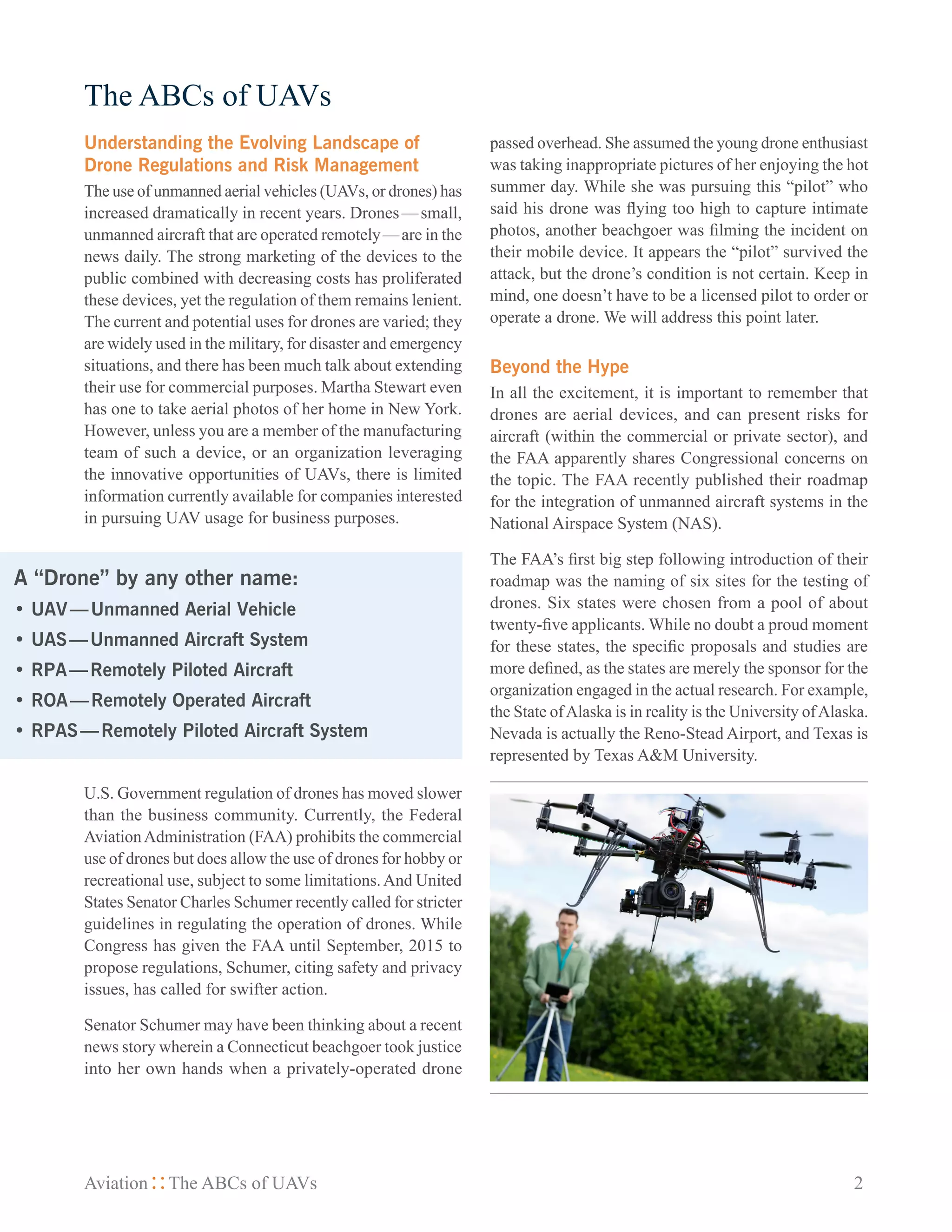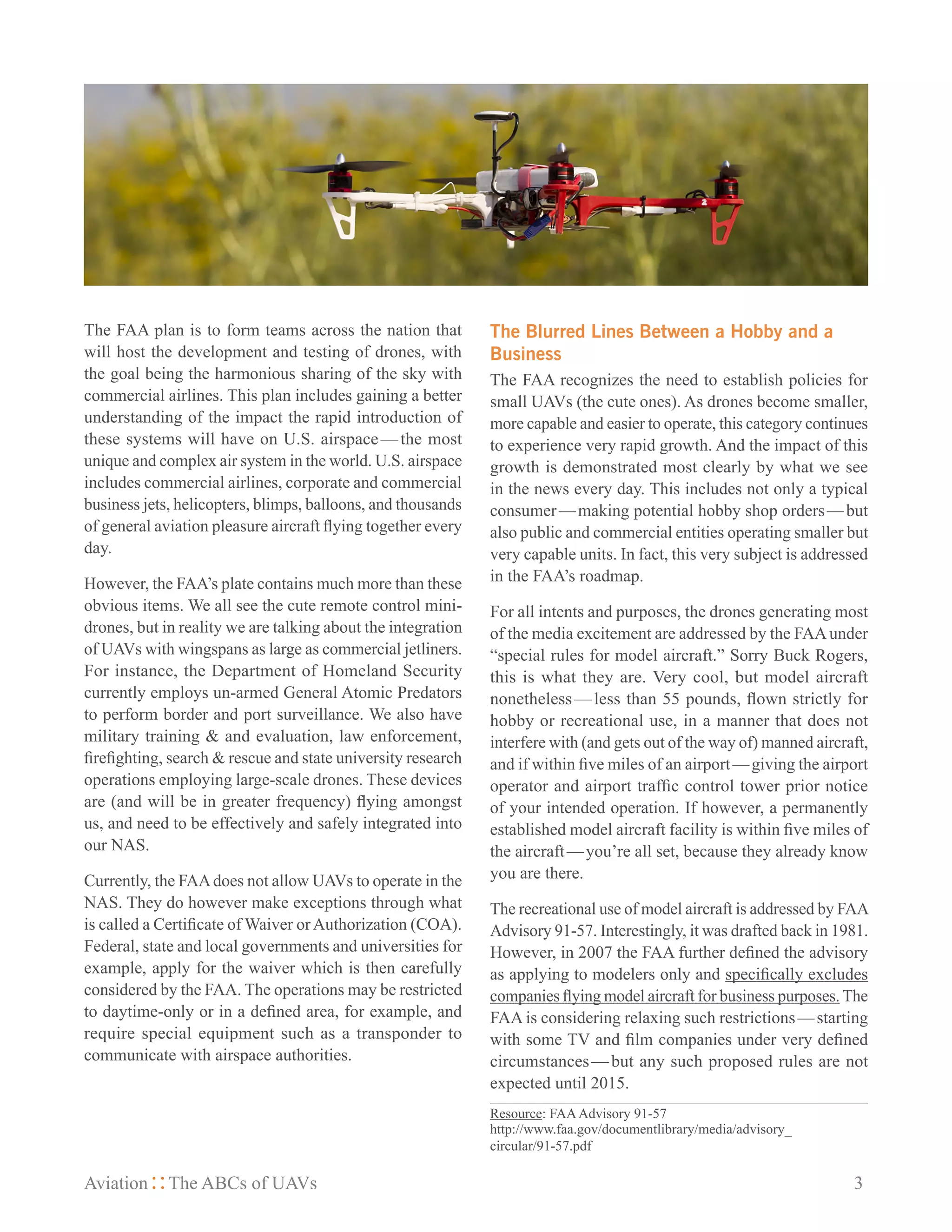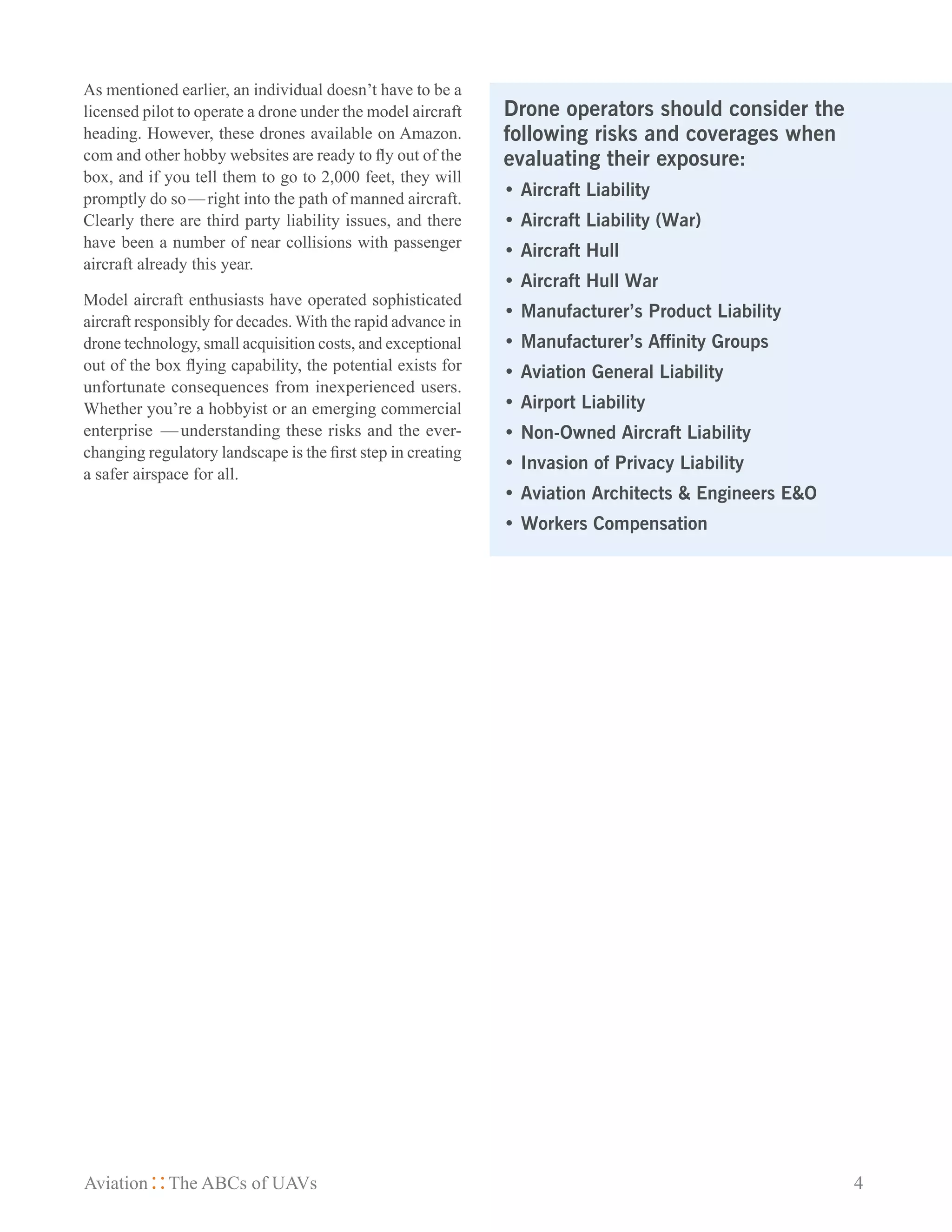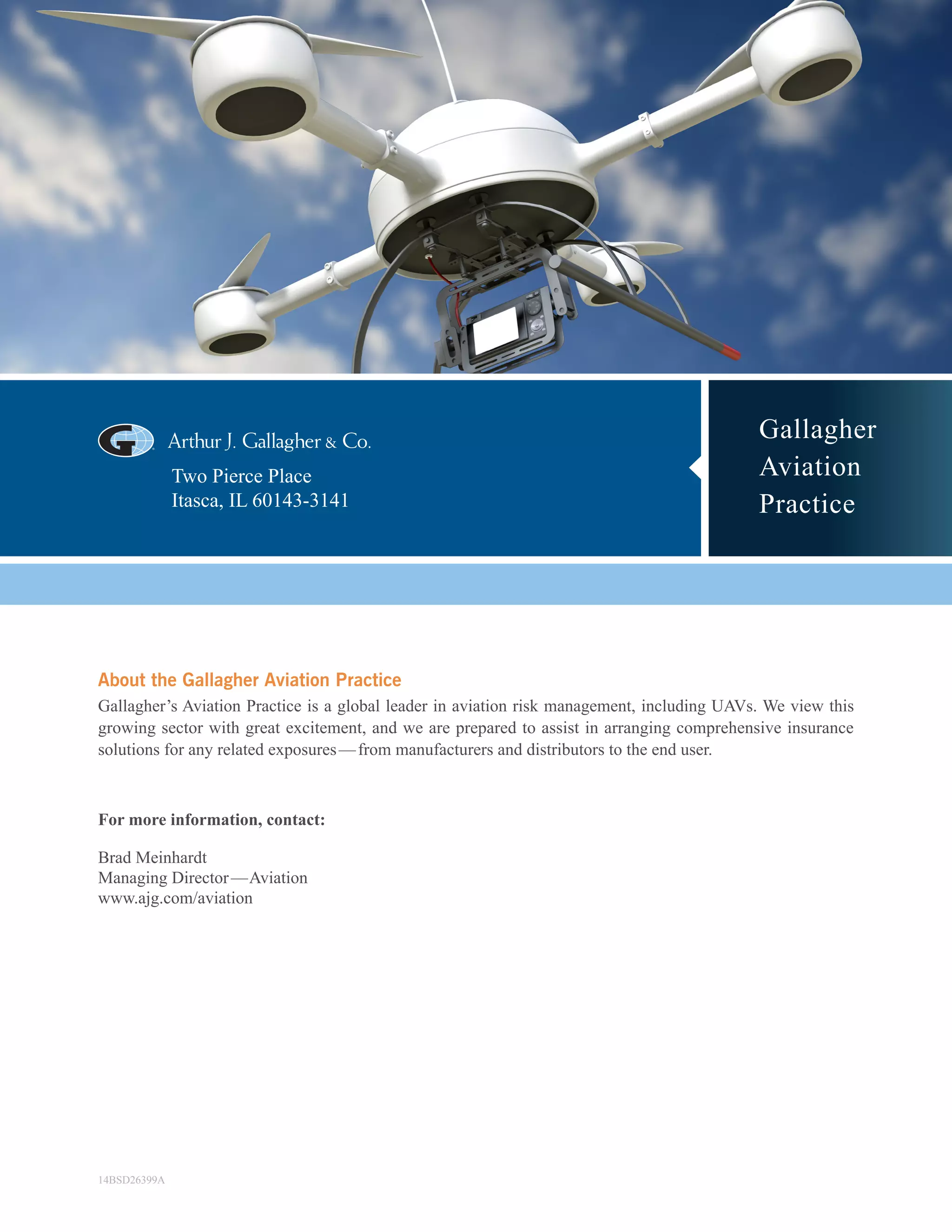The document discusses the rapidly growing use of drones (also called UAVs) and the evolving regulatory landscape around their operation. It notes that while drone use has increased, regulation remains limited. The FAA currently prohibits commercial drone use but allows hobby/recreational use. The document outlines various risks from drone operation that should be considered, such as aircraft liability, invasion of privacy, and workers compensation. It also discusses the blurred lines between hobby and commercial drone use and calls for understanding risks and regulations as drone technology advances.




